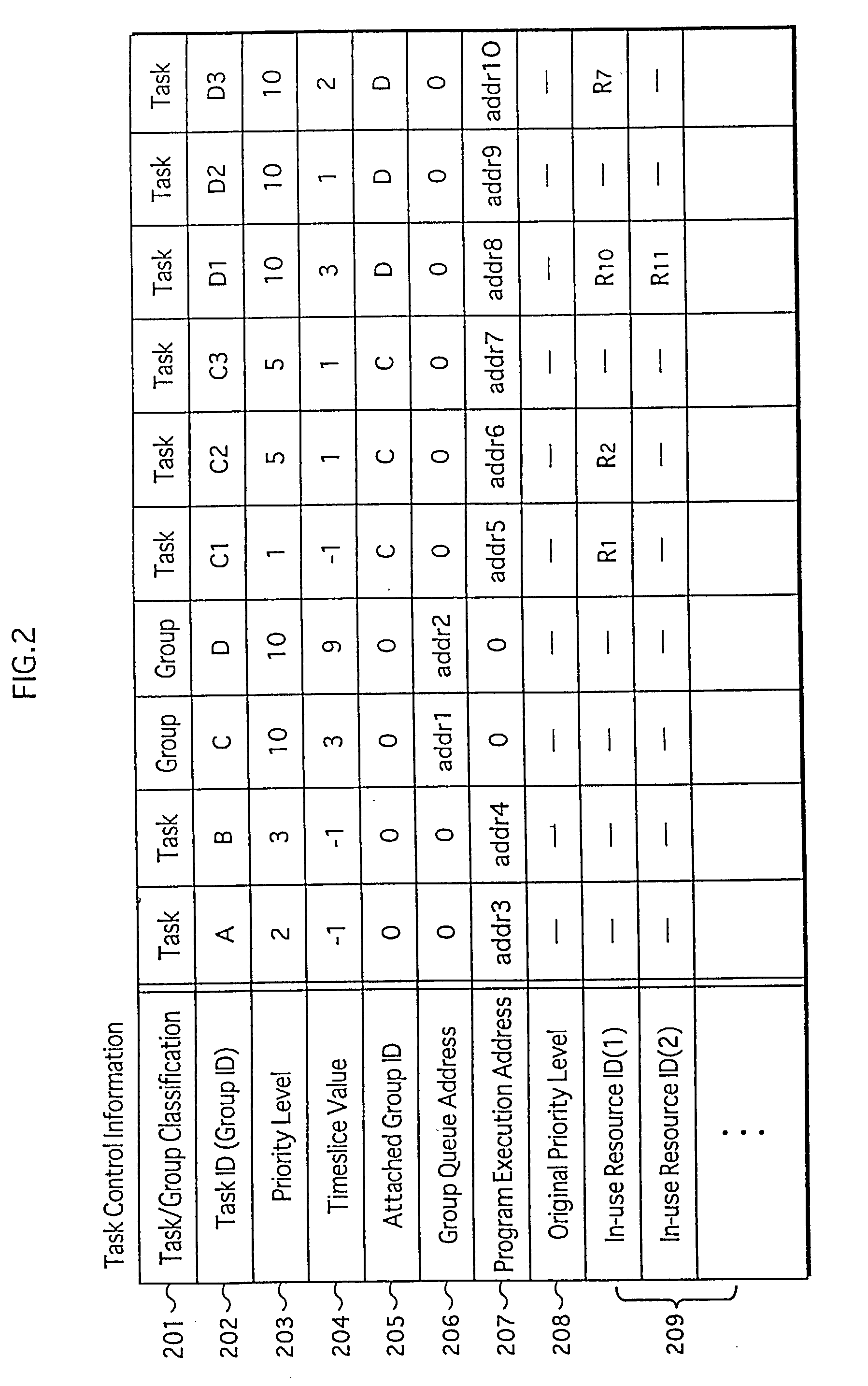Task scheduling device
a task scheduling and task technology, applied in the field of task scheduling operations, can solve the problems of not always the case that the allocated execution period is properly distributed amongst, the structure increases the chances of shortening the time period, and the task may not be completed promp
- Summary
- Abstract
- Description
- Claims
- Application Information
AI Technical Summary
Problems solved by technology
Method used
Image
Examples
embodiment 2
[0214] 2. Embodiment 2
[0215] A task scheduling device according to an embodiment 2 of the present invention will now be described. The task scheduling device of embodiment 2 varies in part from task scheduling device 100 of embodiment 1.
[0216] In comparison to task scheduling device 100, the task scheduling device of embodiment 2 does not perform processing to change,the priority level of a task (or task group if the task is attached to a task group) holding a system resource required by a high priority task, and instead performs processing related to the carrying over of timeslice periods relating to task groups and the tasks structuring a task group.
[0217] Specifically, when the execution of a task or a task group is stopped before the elapse of a time period corresponding to the timeslice value of the task or task group, the task scheduling device of embodiment 2, when the task or task group is next targeted for execution, continues the execution of the task or task group for the...
PUM
 Login to View More
Login to View More Abstract
Description
Claims
Application Information
 Login to View More
Login to View More - R&D
- Intellectual Property
- Life Sciences
- Materials
- Tech Scout
- Unparalleled Data Quality
- Higher Quality Content
- 60% Fewer Hallucinations
Browse by: Latest US Patents, China's latest patents, Technical Efficacy Thesaurus, Application Domain, Technology Topic, Popular Technical Reports.
© 2025 PatSnap. All rights reserved.Legal|Privacy policy|Modern Slavery Act Transparency Statement|Sitemap|About US| Contact US: help@patsnap.com



